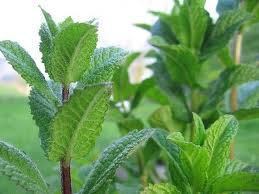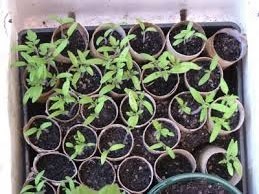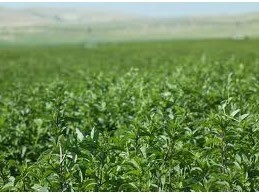Essential Oils: A Guide to Peppermint
As essential oils become more popular in western culture, we are seeing more people become curious about the oil of peppermint. With its fresh and enticing smell as well as its several unique uses, this essential oil offers a plethora of health benefits that have been known for centuries.
The Origin of Peppermint
|
The peppermint plant was officially found across Europe in 1753, but ancient texts and historical findings report that the peppermint plant and its essential oils were used by several ancient cultures long before the plant was “officially” found. Regardless of peppermint’s predated history, the plant has grown into one of the most popularly used herbs in the world. Initially, the plant’s 1753 discoverer Carolus Linnaeus, thought the peppermint plant to be a species of its own but over years of scientific discovery, peppermint has universally been decided to be a cross organic hybrid species of watermint and spearmint plants. How these two mint plants cross pollinated, we may never know but what we do know is that Mentha Piperita or Peppermint has spread beyond Europe to several of the world’s most versatile areas. |
 |
Where is Peppermint Found?
While the peppermint plant may have been originally indigenous to Europe, it quickly spread to become a global plant, found in many of the earth’s regions. In some areas the peppermint plant is considered invasive (locations like The North Eastern area of the United States or in countries like New Zealand) but in other areas like the Pacific Northwest, the growing of the peppermint plant is a big business.
 |
Northwest America at one point was considered one of the world’s foremost producers of peppermint crops and this is no surprise considering that this minty plant prefers to grow in wet, shaded areas near streams or running water, enabling it to quickly spread across several acres of land almost overnight. Although the plant produces no seeds, it can experience quick diversifying and growth through the dispersion of its rhizomes and stolons. Rhizomes are commonly considered rootstalks that grow beneath the topsoil surface of the earth, spreading and shooting upwards through the ground, creating a network of healthy and quick spreading plants, while stolons work similarly as a horizontal connection between each peppermint organism as it spreads across a landscape. |
Producing Peppermint in Oregon and Eastern Washington
Peppermint is the 23rd most precious product produced in the state of Oregon and in the year 2010, the Oregon peppermint crops were estimated to be worth over 35 million dollars. Just above the Oregon crops is the area of Eastern Washington, commonly known as the world’s most famous region for peppermint growth and small family run peppermint farms. It is these farmers who take it upon themselves to grow this precious plant in an effort to keep up with the supply and demand for peppermint oil.
To showcase the popularity and demand for peppermint oil, it is important to understand that one pound of this incredible oil can add that special minty flavor to several products, including roughly 1,500 toothpaste tubes and over 40,000 sticks of peppermint flavored gum. Alone, one barrel of this precious peppermint oil has an estimated value of $10,000 or more, making peppermint a hot commodity in today’s modern world.
Peppermint in the Home and Garden
In the modern world of today, peppermint growth has been brought into the home and garden as well as the farm. The peppermint plant’s aroma is distasteful to household pests and garden bugs, making it an excellent natural remedy to remove plant eating insects from a garden or from inside a home. Because of this, at-home herb growers began bringing these plants to the interior of homes, setting them on front porches and placing them in vegetable gardens. However, as these at-home herb growers began to explore the growing of this plant, it was discovered that housing peppermint plants in a pot would restrict the rapid spreading of this plant whilst still yielding a considerable amount of leaves to produce the coveted peppermint oil and peppermint plant benefits. Best placed in a partly shaded area with a good amount of water, these plants grow strong and healthy, supplying an array of flowers and leaves to be used in essential oils.
How is Peppermint Oil Made
Most essential oils found today have been extracted from their plant of origin by a distillation or extraction process. Peppermint oil is removed from the plant’s leaves through the process of steam distillation that begins on the famous Washington and Oregon Farms.
 |
On these farms, the beginning stage of peppermint oil creation begins on the field. It is here that the plants are cut down and left to dry in the sun for roughly 48 hours. This time frame allows for the dehydration of the plants from any excess water, resulting in pure peppermint oil during the distilling process. Once the plants have sat for 48 hours, they are then gathered up and placed into a steam still that commonly resides directly on the farmland. Farmers will hook up large bins filled with peppermint plants and apply the steam distilling process. The stream will run through the plants and cause the oil to be collected into a still with several condensers. These condensers separate the steam from the oil and dispense the essential peppermint oil into conventional 50 gallon drums. From the field and the 50 gallon drums, most Washington farmers then send their oil to labs where research is conducted to verify the quality, purity and potency of the freshly extracted peppermint oil. |
It is in the lab that all essential oils are checked for adulterations. Adulteration is when an essential oil product is “watered down” with other oils in an attempt dilute it and extend cost. The practice of adulteration is unfortunate and results in diluted products that lack the necessary purity to provide the numerous health benefits that essential peppermint and other essential oils provide.
After a lab has certified the quality and purity of an essential oil, it is then moved to distributors like the team here at Bulk Apothecary. We then sell these high quality oils to our customers who reap the benefits of essential oils that have been known for centuries.
The World’s Oldest Medicine
While peppermint oil is often used in gum or toothpaste, it is also known to be one of the oldest medicines, dating its medicinal properties back tens of thousands of years. As was mentioned above, peppermint was officially “found” by a European in 1753 but in fact, history reports that the production and use of essential oils dates back to the 11th and 12th centuries when an Andalusia pharmacist by the name of Ibn al-Baitar began using essential oils for their medicinal properties. However, other evidence suggests that peppermint oil was used before Ibn al-Baitar by the ancient Egyptians. Egyptian tombs, dated around the time of 1000 B.C. have been discovered harboring essential peppermint oil and it is believed the Egyptians used the oil for its heavenly, fresh aroma and medical purposes. Even Grecian/Roman mythology has a part in peppermint oil’s history with a tale that suggests how the peppermint plant was born. It was believed that the god Pluto transformed a wood nymph named Mentha into a peppermint plant in hopes that she would spread throughout the world and be appreciated by humans for years to come. It is from this story that the scientific name for the peppermint plant, Mentha Piperita, was created. Even ancient Japanese and Chinese cultures have been recorded as harvesters of peppermint plants for its healing and medicinal assets.
Peppermint Oil: The Medical Benefits
Whether the peppermint plant was found in Europe in the year 1753 or by ancient Mediterranean cultures, one fact has remained true about the peppermint plant. Its rich harvested oil can offer several medical benefits and is coveted across the globe. Several modern day studies have been conducted to discover if peppermint oil is really as beneficial as our ancient forefathers thought and the results have been staggeringly positive.
One study conducted at the University of Cincinnati by Dr. William N. Dember found conclusive results stating that the ancient cultures were correct in thinking that the aroma and ingestion of peppermint oil does in fact improve mental concentration, agility and sharpness. As a result of this study, many schools suggest that students chew peppermint flavored gum during an exam to help improve test taking and memory recall.
Other scientists and doctors including Jean Valnet MD and Alan Hirsch MD have found conclusive evidence that peppermint oil can help improve liver, digestive and respiratory systems as well as trigger the sensation of fullness following a small meal, therefore helping in weight management.
Many ancient cultures used peppermint as a remedy for headaches or digestive problems and today’s modern studies have found those remedies and peppermint oil theories to be true. Other studies have found that peppermint oil can assist and heal in several other health categories including dental health, relaxation and skin care.
Medicinal Properties of Peppermint Oil
Peppermint oil has been proven to help in several health related areas. We have listed a quick overview of each area for your convenience.
- Stress and Headache Relief
Thanks the Peppermint oils’ fresh and clean smell, it works as a relaxation stimulator and helps with stress relief as well as prevents depression, headaches and anxiety.
- Respiratory Problems
Peppermint oil and plants are comprised primarily of menthol which is commonly used to clear airways and decrease respiratory problems. We often find peppermint oil used in cold and congestion medicines, specifically chest rubs to clear nasal and airway passages.
- Digestion
As studies and our ancient ancestors found, peppermint oil is an excellent natural tool to help with digestion related issues. It can help calm an upset stomach, reduce gas and aid in relieving heartburn or irritable bowel syndrome.
- Dental Care
Peppermint oil is commonly found in toothpaste because it can help reduce bad breath and kills harmful germs.
- Skin and Hair Care
Similar to how peppermint oil wards of insects and pests in a garden or home, the same is true for the insect of lice. Using this oil on the head not only deters lice but also removes dandruff in a natural and safe way. Peppermint oil can also brighten and neutralize oily skin, making it a valuable asset to any morning or nighttime skin routine.
Where is Peppermint Essential Oil Used?
Peppermint oil serves a purpose across a multitude of industries, household products and at-home remedies. It is commonly distributed in popular brands of chewing gum and several peppermint flavored tooth pastes but also can be found in cleaning solutions and medical over the counter drugs. Naturally-minded adults will use peppermint as a food flavoring agent or to treat aliments such as headaches and respiratory problems while it can also be used in home-made soaps, lotions and body scrubs. The possibilities for the uses of peppermint oil are ever expanding as scientific research continues to link the several benefits of this essential oil to everyday uses.
Use with Caution
Similar to all essential oils, high concentrations of ingested peppermint oil can result in toxic complications. Every essential oil is suggested to be diluted while being used and we suggest that those using essential oils never use the oils in excessive amounts. Recipes call for a specific amount of oil to be used and going over that amount can result in heart burn, dizziness and slowed heart rate. Remember to use all essential oils with caution and to follow exact instructions to be able to take advantage of all the benefits this oil and others can provide.
Peppermint Today
The use of essential oils was very popular among our ancient cultures and now we are once again seeing a movement that embraces the natural properties of organic, essential oil healing. Peppermint oil with its minty fresh enticing smell and its plethora of health benefits is once again rising in popularity as one of the best and most versatile essential oils. Not only does this incredible oil assist in daily living and healing, it also stimulates the American economy and helps Northwest farmers.
Whether it is used in soap making, as an ingredient in a vapor cold and flu rub or as a household insect repellent, peppermint oil is predominately one of the most beneficial essential oils available in today’s modern world.
Sources:
http://www.youtube.com/watch?v=sBO4PrDZ-1Y
http://www.livestrong.com/article/120920-toxicity-peppermint-oil/
http://eugenewellness.wordpress.com/tag/peppermint/
http://www.oregonlive.com/business/index.ssf/2011/08/powerful_peppermint_oil_an_ore.html


